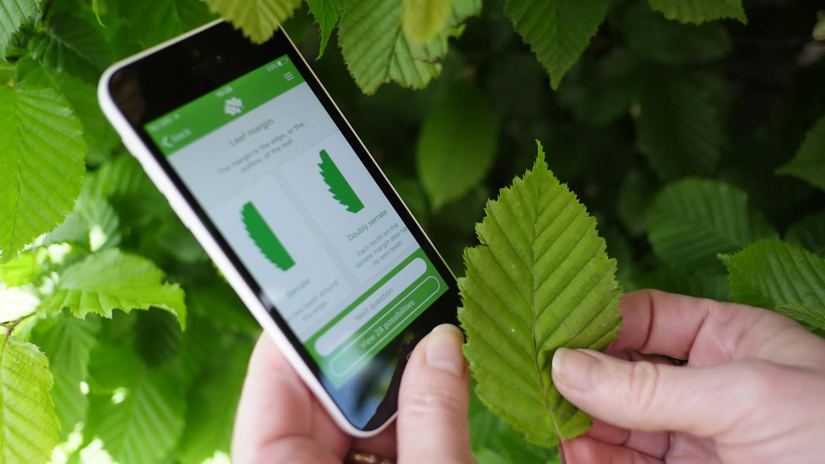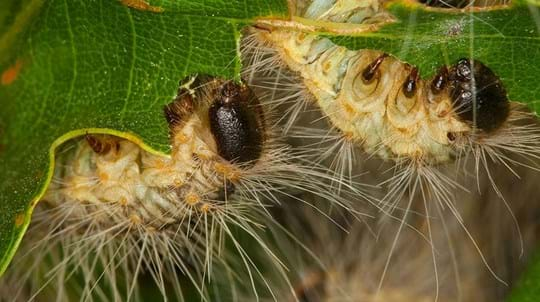
Credit: John Oates / WTML
Leaves
Unlike most willows, the leaves are oval rather than long and thin. They are hairless above, but with a felty coating of fine grey hairs underneath, and have a pointed tip which bends to one side.
Also known as the pussy willow, the male catkins of the goat willow look like a cat’s paws. It supports lots of wildlife, including the elusive and regal purple emperor butterfly.
Common names: goat willow, pussy willow, great sallow
Scientific name: Salix caprea
Family: Salicaceae
Origin: native
Mature trees grow to 10m and can live for 300 years. The bark is grey-brown and develops diamond-shaped fissures with age. Twigs are hairy at first but become smooth, and can appear red-yellow in sunlight.
Look out for: the tips of the leaves which often appear bent to one side and are densely hairy below and slightly hairy above. Catkins appear before the leaves.
Identified in winter by: the greenish-brown, rounded, hairless buds which are only slightly pressed close to the twig.

Credit: John Oates / WTML
Unlike most willows, the leaves are oval rather than long and thin. They are hairless above, but with a felty coating of fine grey hairs underneath, and have a pointed tip which bends to one side.

Credit: Pete Holmes / WTML
Goat willow is dioecious, meaning male and female flowers grow on separate trees. In early spring, the catkins develop – the male catkins grey, stout and oval, becoming yellow when ripe with pollen; the female catkins longer and green.

Credit: Age Fotostock / Alamy Stock Photo
Once pollinated by wind, female catkins develop into woolly seeds. Most willows can also propagate themselves by lowering their branches to the ground, where they then develop roots.
Several of the willow species native to the UK, many of which hybridise with one another, making them hard to identify. Goat willow often hybridises with the grey willow (Salix cinerea).

Download our free Tree ID app for Android and iPhone to identify the UK's native and non-native trees. It's an A-Z tree guide in your pocket.
Download the appIt is found growing in woodland, hedgerows and scrub, and on damper, more open ground, such as near lakes, streams and canals.

Credit: FLPA / Alamy Stock Photo
Goat willow foliage is eaten by the caterpillars of a number of moths, including the sallow kitten, sallow clearwing, dusky clearwing and lunar hornet clearwing. It is also the main food plant for the purple emperor butterfly. Catkins provide an important early source of pollen and nectar for bees and other insects, and birds use goat willow to forage for caterpillars and insects.
All willows were seen as trees of celebration in biblical times, but this changed over time and today willows are more associated with sadness and mourning. Willow is often referred to in poetry in this way, and is depicted as such in Shakespeare's Hamlet, with Ophelia drowning near a willow tree. In the north of the UK, willow branches are used instead of palm branches to celebrate Palm Sunday.
It is thought that ‘willow’ is the source of the words witch, wicked and Wiccan.
Goat willow timber is soft and yellow in colour. Unlike most willows, its brittle twigs are not suitable for weaving. The wood burns well and makes a good fuel and charcoal.
Sallow wood was often used to make ‘wattle’ – a woven lattice of wooden strips which formed the framework of the walls of houses.
Traditionally, willows were used to relieve pain associated with a headache or toothache, and the painkiller aspirin is derived from salicin, a compound found in the bark of all Salix species. In medieval times, in many parts of Europe, the bark was chewed to release the salicin.
The bark was also boiled in water and the liquor drunk to relieve diarrhoea, help reduce joint inflammation in arthritis and as a gargle for sore throats. Externally, the liquor was used to stop bleeding, clean wounds and to treat general aches and pains.

Helen Keating • 05 Dec 2022
Transform your home into a woodland wonderland this Christmas with our easy ideas for festive, foraged home decor.
Be inspiredLike other willows, goat willow is susceptible to watermark disease caused by the bacteria Brenneria salicis. Over time, this leads to affected branches dying back and red leaves developing in other parts of the crown. If left untreated, the tree can die.

Shop
We have single trees and tree packs to meet your needs, from wildlife to woodfuel. Delivery is free.
External link

Trees woods and wildlife
Learn more about the pests and diseases threatening our trees. Find out how to spot them, the symptoms and outlook, and how you can help.